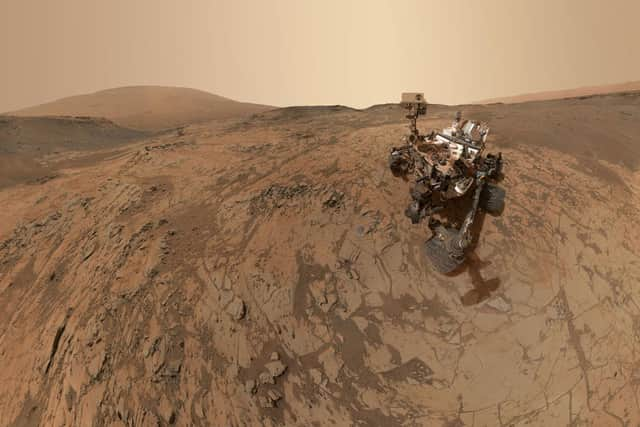Curiosity: Mars rover discovers new evidence the planet once had rivers - an essential ingredient for life
and live on Freeview channel 276
Geologists have identified ancient eroded remnants of rivers in several craters on Mars, through a combination of images from Nasa's Curiosity rover, scans of sedimentary rock beneath the Gulf of Mexico on Earth and computer simulations.
Details were gathered by examining data collected by Curiosity at the Gale Crater - a large impact basin on the Martian surface. Researchers identified specific landforms called bench-and-nose features, which are found within numerous small craters, but until now had not been recognised as being deposits formed by running water.
Advertisement
Hide AdAdvertisement
Hide Ad

In a statement, geoscientist Benjamin Cardenas of Penn State University and lead author of the research said: "We're finding evidence that Mars was likely a planet of rivers. Our research indicates that Mars could have had far more rivers than previously believed, which certainly paints a more optimistic view of ancient life on Mars. It offers a vision of Mars where most of the planet once had the right condition for life."
Rivers are an important part of chemical, nutrient and sediment cycles on Earth, and this discovery could be important in the search for life on the Red Planet. The findings are published in Geophysical Research Letters, where the identification of the bench-and-nose landforms suggests that rivers were even more widespread than thought. They alternate between steep slopes and shallow 'benches', and shortened ridges called 'noses' and form when sedimentary material laid down in channels by rivers is eroded in a preferential direction, possibly by prevailing winds.
Cardenas and Kaitlyn Stacey, also of Penn State, also scanned layers of sedimentary bedrock on the sea floor beneath the Gulf of Mexico taken by oil companies 25 years ago when they suspected the origin, and the computer model was then able to simulate the erosion of sediment left by rivers to form the bench-and-nose landforms. Evidence for rivers on Mars has been known since Mariner 9, the first spacecraft to orbit Mars, pictured dried-up river channels and floodplains on its surface.
Comment Guidelines
National World encourages reader discussion on our stories. User feedback, insights and back-and-forth exchanges add a rich layer of context to reporting. Please review our Community Guidelines before commenting.
